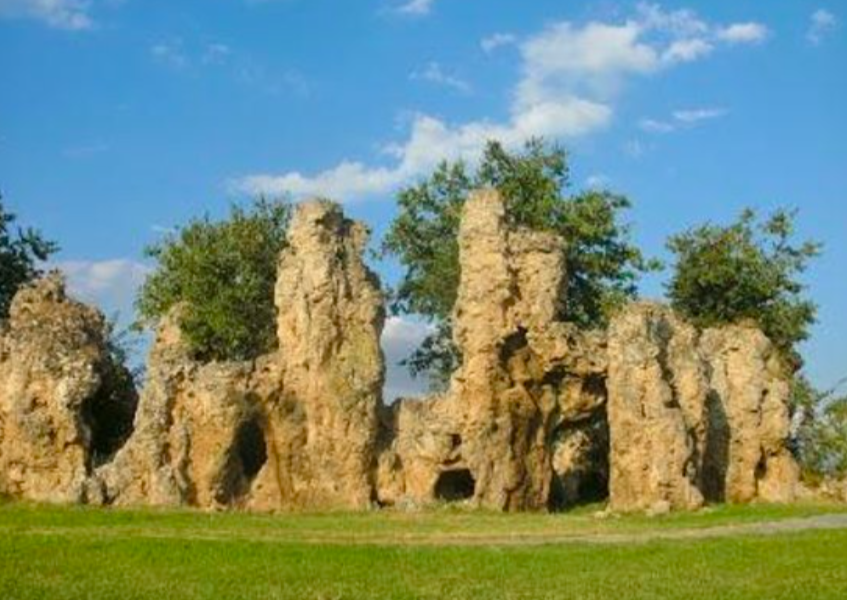About 50 kilometres from Thessaloniki, between Lakes Koronia and Lake Volvi, rests an impressive natural monument known as the Nymfopetres or Nymphs Stones.
Around several thousand years old, the Nymphs Stones are a rare geological formation- a series of rocks, standing upright as though they have leapt out of the earth's surface, some reaching a height of 4 meters and creating the impression of a 'stone forest'.
In complete contrast with the surrounding green landscape, the Nymfopetres are even more impressive because they are located around a meadow and flat areas, so they look like they were placed there by humans.
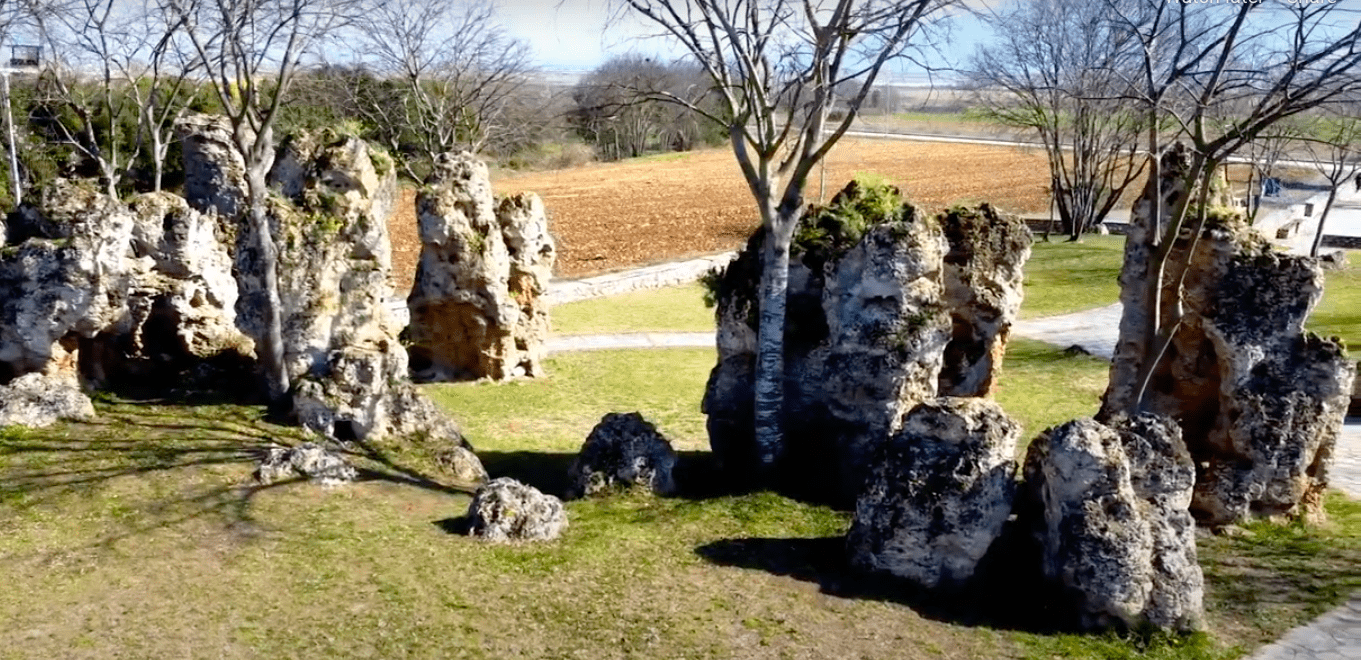
The spectacle is extraordinary, especially at night in the moonlight, giving the landscape an extra-terrestrial, almost mythical feel.
Perhaps this is why the area has become the subject of local folklore, with a number of legends offering explanations about how this strange geological phenomenon came to be.
The most popular myth says that the Nymphs Stones were once a bridal procession that were petrified outside the village.
The legend says that once upon a time, a groom from Lagadas, was escorting his bride with a large escort and her dowries back to his village after their wedding.
But suddenly the bride, who had already cleaned out everything in her parent's house for her dowry, remembered that she had forgotten to take the spindle and sent someone to go and fetch it for her.
The legend says that when the mother heard of her greedy daughter's order, she became angry and cursed her, turning the bride and all of her entourage into stones.
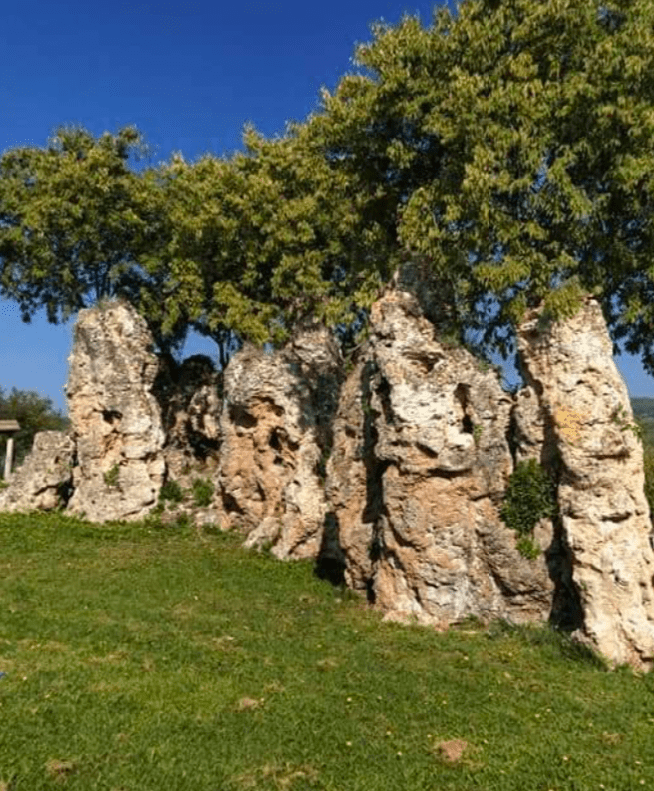
Another myth similarly claims that the mother cursed her daughter-in-law because she married without her parents' consent – resulting in the same petrified outcome for the wedding party.
A third myth states that a group of hunters stumbled upon a group of nymphs bathing in the waters of a spring. Enchanted by the beautiful spectacle, they watched them, causing Artemis the goddess of wild animals, vegetation, chastity and childbirth to become angry with their disrespect and to petrify them.

Despite the myths, however, the scientific explanation of the phenomenon of peculiar rock formations is completely different and provides evidence of the intense geological activity of the area during its geological evolution and the diagenesis of the rocks that make up the substrate of the area.
The peculiar upright rock formations called the Nymphs Stones are made from travertine.
Travertine is formed when carbon dioxide-rich water percolates through rocks in limestone areas, dissolving the limestone and becoming saturated with it. When the environment that the water runs through undergoes significant changes such as drops in pressure or changes in temperature, this causes the water to release the carbon dioxide as gas, much like fizzy drinks. The calcium carbonate then recrystallises; small debris, scrub and living biotic material such as moss, algae, and cyanobacteria are encrusted and fossilised in layers over time.
Regardless of the scientific explanation, the beautiful, fossilised rock forest knowns as the Nymphs Stones remains romanticised and a popular backdrop for wedding photography, with many for newlyweds traveling to the mythical location with their bridal parties to take some very unique shots of their special day.
The neighbouring village is named Nymfopetra (Nymphopetra) after this rare phenomenon.
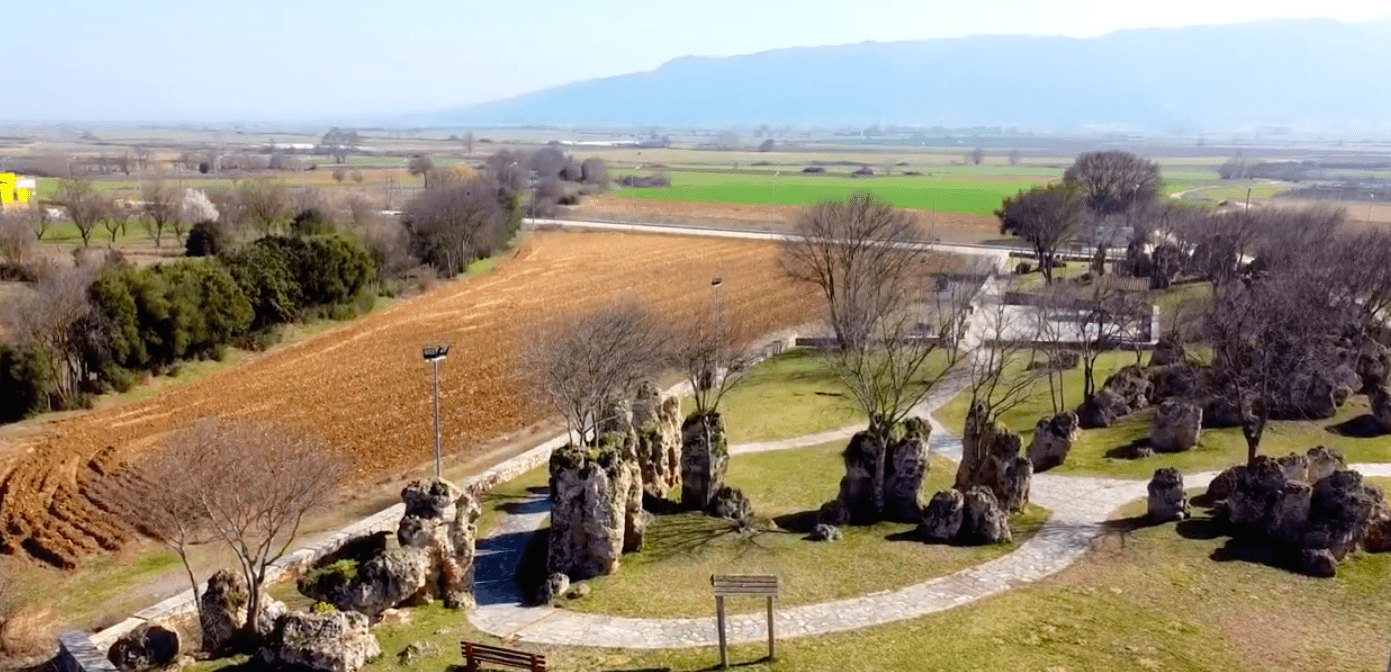
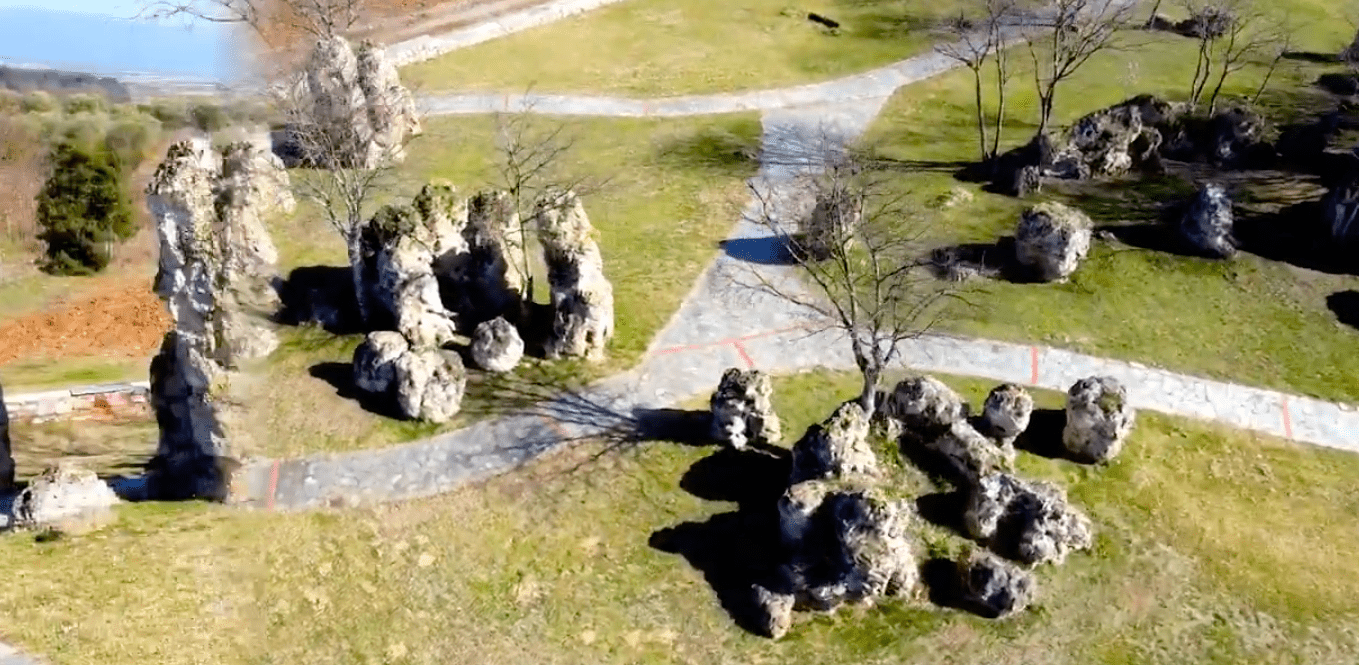
Akra Drastis: One of Nature’s Lesser-Known Great Masterpieces

